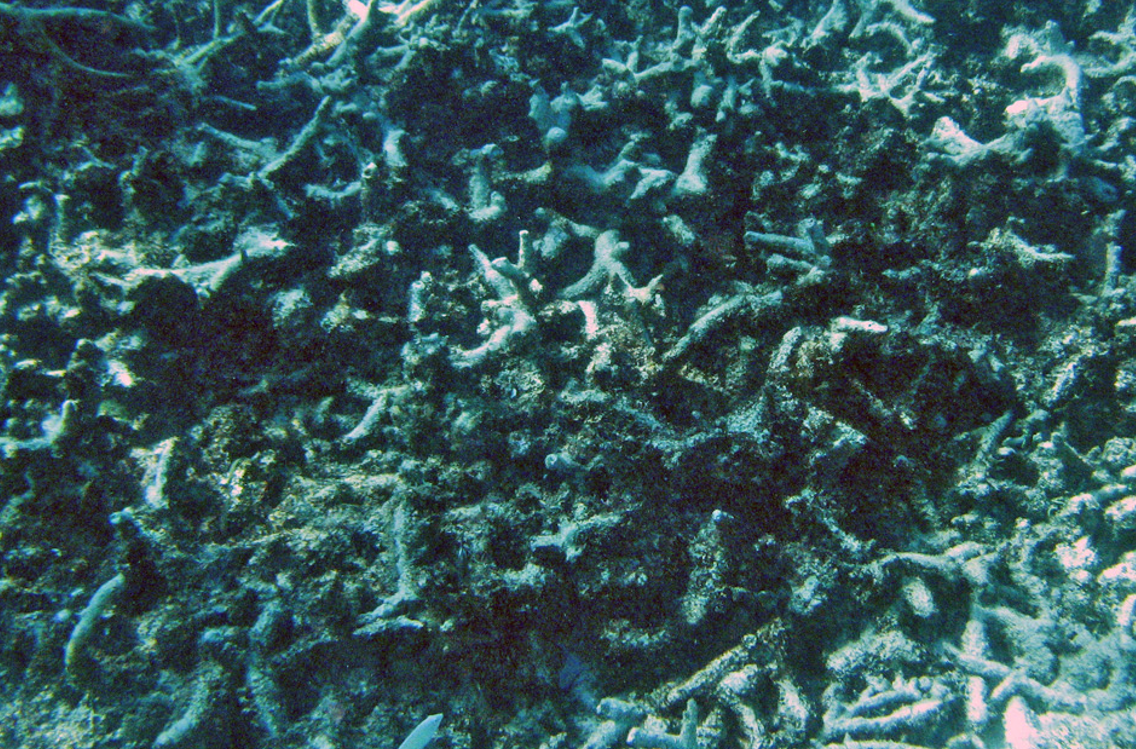Image: © Sean Nash
To gain access to full information on harmful algal blooms, download the information sheet produced by the LMMA Network and SPC.
What are algal blooms?
The sea, particularly near the coast, contains many very small drifting plants called phytoplankton (pronounced fi–tow-plank-ton).
Most of these small drifting plants are harmless and are important in providing food for many other marine species. But sometimes their numbers increase dramatically and this is referred to as an algal bloom.
How can we reduce the number of harmful algal blooms?
The number of some types of harmful algal blooms can be reduced by controlling the amount of nutrients entering coastal waters. Human and stock sewage appears to be the major source of nutrients in cases where there are poor sewerage systems – this is particularly so in atolls where ground water and lagoons can easily become contaminated.
-
Waste water from sewage treatment plants and overflows from septic tanks (underground tanks in which sewage is decomposed by bacteria) must not be allowed to enter rivers or coastal waters. In some cases, bananas and other crops have been planted near outfalls and overflows where they are believed to absorb these nutrients before they reach the sea. Alternatively, human and farm animal waste can be composted – a process in which the material is allowed to decay before being used as a fertilizer for growing plants.
-
Shrubs and trees near rivers and along the foreshore should be protected and bare areas re-planted. Natural vegetation, including mangrove trees at the water’s edge, use at least some nutrients before they reach the sea.
What are harmful algal blooms?
A few types of phytoplankton produce strong toxins or poisons and when their numbers increase it is referred to as a harmful algal bloom or HAB. Members of the group illustrated above (dinoflagellates) are often involved in harmful algal blooms that kill fish and shellfish either directly, because of either they produce toxins, they clog gills, or because they decrease the amount of oxygen in the water.
What causes harmful algal blooms?
Like all plants, phytoplankton need sunlight and nutrients to grow and increase in numbers - nutrients are substances that are used as food by animals and plants. The two critical nutrients for phytoplankton are nitrogen and phosphorous and these are usually present in very low concentrations in seawater.
However in certain circumstances, nutrients in coastal waters increase dramatically causing harmful algal blooms. In Pacific Island countries, high loads of nutrients may be related to the following events.
-
The wet season causing nutrients to be washed off the land (run-off)
-
Cyclones resulting in coastal damage, heavy rains and increased run-off
-
Release of nutrients from corals after the use of dredges or explosives
-
Run-off of nutrients in fertilisers from farms and sewage from stock and humans
Harmful algal blooms cause a variety of human illnesses. Some toxic phytoplankton are filtered from the water as food by shellfish such as clams, mussels and oysters. People eating these shellfish suffer from a condition known as Paralytic Shellfish Poisoning which results in numbness, vomiting and even death.
A few harmful algal blooms produce toxins that effect people who are just swimming and walking on the shore-line. One type of toxic phytoplankton (Karenia brevis) has affected local residents and beachgoers who breathed its toxins in spray from the sea - effects include tingling, dizziness, lung irritation and coughing.
Ciguatera Fish Poisoning is caused by perhaps the most common harmful algal bloom in Pacific Island countries.
-
Toxic phytoplankton (perhaps several different species including Gambierdiscus toxicus) are normally associated with seagrass beds.
-
Increased nutrients (for example, released from damaged corals) cause the toxic phytoplankton to increase greatly in abundance. Small grazing fish feeding on the seagrass concentrate the toxins in their bodies.
-
Larger fish feeding on the smaller fish gain even higher concentrations of the toxins. Through the food chains, the toxins reach dangerous levels in some emperors, red snappers, barracudas, moray eels, large mackerels and others.
-
People eating affected fish suffer from ciguatera and experience numbness, muscle pains, and a curious reversal of temperature sensations (cold objects feel hot to touch). In extreme cases, death occurs through respiratory failure.
The possibility of fish being toxic because of ciguatera causes severe marketing problems. Unfortunately, and in spite of widespread folklore on the subject, there is no reliable, cheap test to determine whether or not a particular fish is toxic before consumption. One common belief is that toxic fish can be recognised by exposing a fillet of the fish to flies – the flesh is regarded as poisonous if the flies avoid it. Another belief is that a toxic fish can be recognised by placing a silver coin on the flesh – if the coin turns black, the flesh is not safe to eat. Unfortunately these tests, and many other widely trusted ones, do not work.
Related resources

To gain access to full information on harmful algal blooms, download the information sheet

